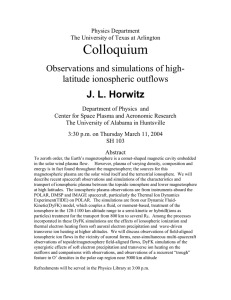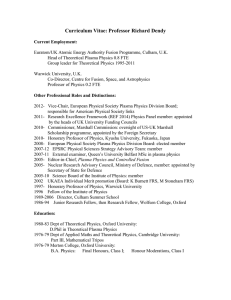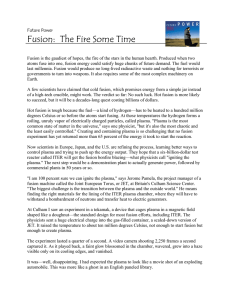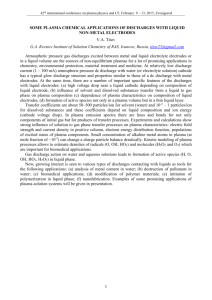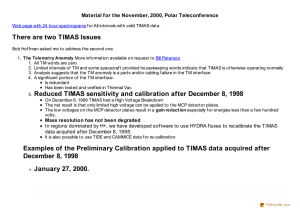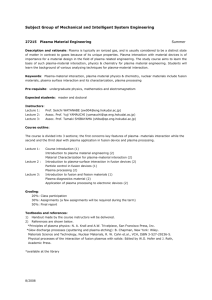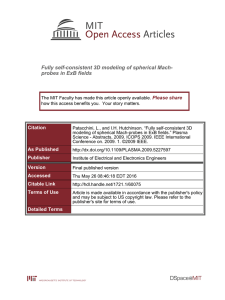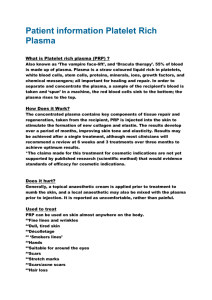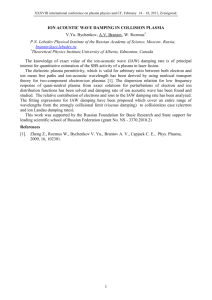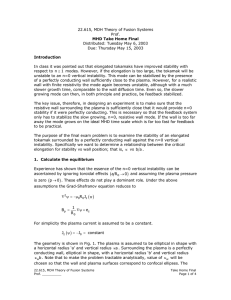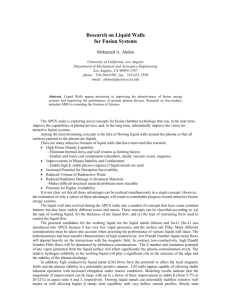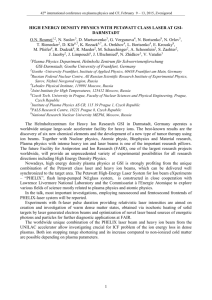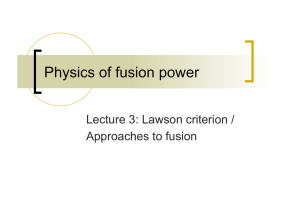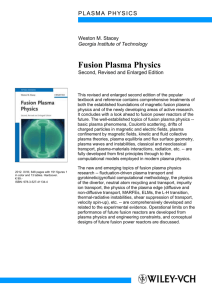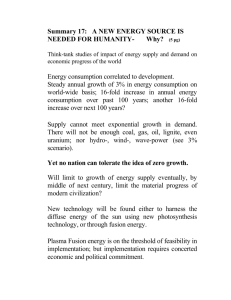Simulations of Fast Ion Slowing-Down Rates in a Background Plasma
advertisement
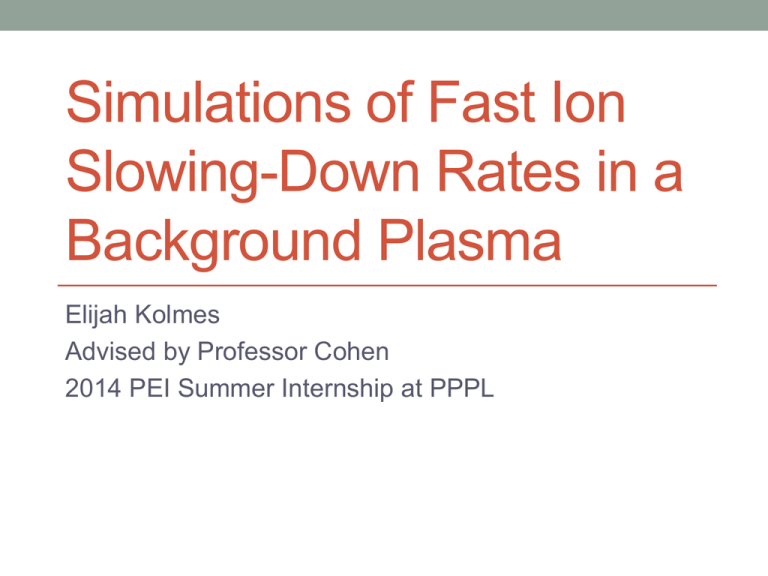
Simulations of Fast Ion Slowing-Down Rates in a Background Plasma Elijah Kolmes Advised by Professor Cohen 2014 PEI Summer Internship at PPPL Broader Context • Working at Princeton Plasma Physics Lab • Research geared toward understanding the behavior of plasmas, which are important for developing fusion energy. Image from science.energy.gov Field-Reversed Configurations • Alternative approach to magnetic confinement. • Several potential advantages, including small size and potential suitability for aneutronic fuels. • Behavior of energetic fusion products has important implications for FRC performance. • Power and particle control Image from w3.pppl.gov (taken by Professor Cohen) Slowing-Down Rates in an FRC-like Plasma • Relevant for understanding the behavior of fusion products, as well as understanding heating techniques. • My simulations were primarily relevant to the behavior of the products of D-He3 fusion. • Strong magnetic field • ρL < λD – possible disruptions to Debye shielding? • Very high temperatures • vfast ion > velectron LSP and PIC Codes • Large-scale plasma simulations. • A few simplifications • Particle-in-Cell codes: discretization of some continuous quantities • Larger numbers of “real” particles are clumped together to be simulated as macroparticles. • Some of these effects turn out to be more important than initially anticipated. Overall Results • Measured basic characteristics of the algorithm’s performance (precision of energy conservation, etc.) • Measured dependences of fast ion slowing-down rates on a number of parameters, including fast ion charge and plasma density. • Most of these results were fairly close to the expected relationships. • Later, I found some interesting effects that came out of the LSP code itself. • Effects of macro-particle “clumping” on measurements of dW/dx. Reflections • This was a very rewarding experience. • Exposure to computational physics and to plasma physics research. • Continued interest in plasma physics and in physics research in general. Thanks to: • Professor Cohen, my advisor • Dr. Welch at Voss Scientific • Dr. Sefkow at Sandia National Labs
